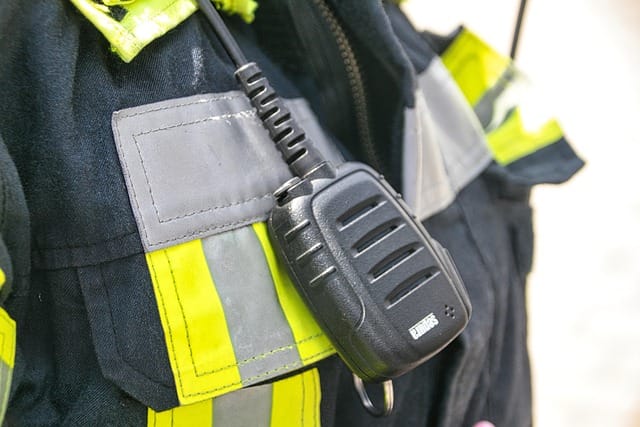Learn about Can Walkie Talkies Be Traced. Discover whether walkie-talkies can be traced, how signal tracking works, who can detect transmissions, and which radios offer more privacy. Learn key factors, risks, and safety tips.
A walkie-talkie is a small handheld radio that allows two or more people to communicate without phones or the internet. It transmits and receives voice messages by radio waves and is commonly utilized by hikers, security teams, workers, and families as a fast, simple, and convenient way of communication.
Can Walkie Talkies Be Traced?
Yes, walkie-talkies can be traced, but depending on the technology applied. Policemen can identify radio signals, find running frequencies, and trace high-power or unlicensed equipment. Legal, low-power, walkie-talkies are less easy to track, but misuse on restricted channels raises the probability of detection and punishment.
Factors Influencing Traceability
1. Frequency Used
Walkie-talkies that use limited or high-power frequencies are simplified by the authorities to trace and locate. Legal FRS or low-power channels are not so apt to attract attention or indicate monitoring.
2. Transmission Duration
A walkie-talkie is easier to trace when there are long or frequent transmissions since signal-monitoring tools are able to monitor regular radio traffic. Brief bursts of communication decrease the possibility of detection or pinpointing of the signal.
3. Encryption and Digital Features
Encrypted digital walkie-talkies are more difficult to intercept or decode, and they are more private. Nevertheless, even encrypted radios may be found by means of signal detection when applied inappropriately or during prolonged usage.
4. Operational Context
The traceability is also subject to the use of radio location and usage. Areas with high risks, sensitive locations, or unlicensed frequencies enhance monitoring, and thus, detection is likely to occur than when an individual is using personal frequencies casually or legally.
Which Walkie-Talkies Are Easier or Harder to Trace?
✔ Easier to Trace
- Cheap analog walkie-talkies
- Public-frequency radios are not licensed.
- Devices of high power are in use outside legal boundaries.
- Devices with constant transmissions.
- Radios used in open areas
✔ Harder to Trace
- Electronic encrypted walkie-talkies.
- Frequency-hopping radios
- Low-power, short-range models
- Radios were used for short and sporadic periods.
- Such professional models as Motorola MotoTRBO, Hytera DMR, and P25 systems.
Who Can Trace Walkie-Talkies?
1. Law Enforcement
Police can track walkie-talkie signals with special direction-finding equipment during a criminal investigation, search-and-rescue operation, or when handling unauthorized radio transmissions and other issues of public safety.
2. Military Forces
The military has well-developed communication-tracking systems, which are able to monitor hostile, suspicious, or illegal radio communications. They also track walkie-talkie messages for security, intelligence collection, and control of the battlefield communications.
3. Spectrum Regulatory Agencies
To detect unauthorized frequencies, investigate interference, enforce licensing regulations, and apply monitoring equipment to determine illegal use of walkie-talkies and defend the national integrity of airwaves, agencies such as the FCC, NTC, PTA, and OFCOM monitor these frequencies.
4. Radio Hobbyists (Limited)
Radio hobbyists are able to scan and listen to the unencrypted analog transmissions, although in most cases they do not have the specialized equipment to determine the location, making them only able to monitor users of walkie-talkie communications so far as monitoring the signal.
How Long Does It Take to Trace a Walkie-Talkie?
It can take:
- Minutes when the device is in continuous transmission.
- Hours with short or rare transmissions.
- Both encrypted and low-power radios require days or more.
Availability of monitoring equipment is also what contributes to the time.

When is location tracking possible?
| Radio Type | Can It Be Location-Tracked? | Notes |
| FRS/GMRS (family walkie-talkies) | Yes | Strong signals make tracing possible. |
| Business UHF/VHF radios | Yes | Used by security, easier to detect. |
| Analog walkie-talkies | Yes | Most traceable. |
| Digital (DMR) radios | Harder | Still possible with advanced equipment. |
| Encrypted walkie-talkies | Difficult | Content hidden, location still traceable. |
| Spread-spectrum radios | Very difficult | Designed to avoid detection. |
Benefits of Traceable Walkie-Talkies
- Safety improvement of teams on the field.
- Location tracking in times of emergency.
- More effective organization of major events or activities.
- Responsibility and control.
- Recovery of lost devices
- Better security of communication (in the case of encryption).
Pros and Cons of Walkie Talkies Being Traceable
✅ Pros
- Scouts, police,ce or rescue services locate the lost.
- Patrols workers in risky workplaces.
- Deters invalid or suspicious radio traffic.
- Applicable in fleet and security applications.
❌ Cons
- Privacy concerns
- Illegal users can hear unencrypted channels.
- Tracking equipment used in high-end applications is costly.
- Some users might require anonymity for good reasons.
FAQs
1. Can someone listen to my walkie-talkie?
Yes. Unencrypted walkie-talkies can easily be heard by anyone using the same channel or someone using a radio scanner. The conversation on most consumer radios is not private due to their open frequencies and thus easily intercepted.
2. Are encrypted walkie-talkies traceable?
Yes. Although voice content is encrypted in walkie-talkies, the radio signal can still be detected and determined with the direction-finding technology. Encryption will stop eavesdropping, but not conceal the source of transmission.
3. Do walkie-talkies send location?
No. The majority of simple walkie-talkies do not have GPS location transmission. It is only those sophisticated digital models that will transmit positional data with inbuilt GPS or network capabilities, and this functionality needs to be activated by the user or system.
Conclusion
Walkie-talkies may be tracked based on frequency, strength, and applications. Continuous or unauthorized transmissions pose a higher risk of detection, whereas encrypted or low-powered models provide a higher degree of privacy. The knowledge of traceability assists users to communicate in a safe, legal, and responsible manner without any unwarranted surveillance or discipline.

